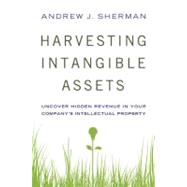
Note: Supplemental materials are not guaranteed with Rental or Used book purchases.
Purchase Benefits
What is included with this book?
| Preface | |
| Acknowledgments | |
| The Intellectual Capital Agrarian | |
| Time to Market | |
| Balance Sheets: An Archaic Measure of a | |
| Company's True Intrinsic Value | |
| The Tomato Exercise | |
| Challenges for the New Agrarian | |
| A Commitment to New Agrarianism | |
| Planting the Seeds: Fostering a Culture of Innovation | |
| Building a Genuine Culture of Innovation | |
| Leadership and Governance Principles for | |
| Fostering a Culture of Innovation | |
| Leadership Archetypes in Fostering a Culture of Innovation | |
| Building Agrarian Teams | |
| Best Practices in Fostering and Maintaining a | |
| Culture of Innovation | |
| Irrigating the Field: Embracing | |
| Intrapraneurship | |
| Intrapreneurship and Leadership | |
| Spin-Offs | |
| Why Does Intrapreneurship Go Ignored or | |
| Misunderstood in So Many Companies? | |
| Caring for the Fruits of the Harvest | |
| Intellectual Asset Management (IAM) | |
| What Is Intellectual Asset Management? | |
| Building an Effective IAM System | |
| Conducting an IP Audit | |
| Measuring the Results of Innovation | |
| Key Quantitative Metrics in Measuring | |
| Innovation | |
| Building Fences to Protect Your Turf | |
| Developing a Legal Strategy | |
| Legal Management of Intellectual | |
| Property | |
| The Allocation of Legal Budgets | |
| Understanding Intellectual Property | |
| Laws | |
| Patents | |
| Trademarks and Service Marks | |
| Copyrights | |
| Trade Secrets | |
| Trade Dress | |
| Can This Business Model Be Sustained? | |
| Separating the Wheat from the Chaff | |
| Readying Crops for the Market | |
| Some Best Practices and Common | |
| Mistakes | |
| A Reality Test for Effective Agrarianism | |
| Inventor's Syndrome | |
| Pilots and Pioneers | |
| Some Lessons from Companies That Are | |
| Particularly Strong at New Product | |
| Development | |
| A Four-Step Filtering Tool | |
| Bringing the Crops to the Marketplace: An | |
| Overview of Strategic Alternatives | |
| Four Critical Steps in Building an Agrarian | |
| Leveraging Plan | |
| Best Practices in the Development of the | |
| ALP | |
| Harvesting the Power of Intellectual Capital | |
| Leveraging: Cooperatives, Customers | |
| Channel Partners, Licensing, Joint Ventures, and Franchising | |
| Cooperatives and Consortiums | |
| Patent Pooling | |
| Open Sourcing and Open Platforming | |
| Crowdsourcing and the Wisdom of Crowds | |
| Building Effective Multiple-Channel Partner | |
| Relationships | |
| Joint Ventures and Strategic Partnering | |
| Licensing Strategies to Drive Revenues and | |
| Profits | |
| Franchising | |
| The Global Intellectual Asset Frontier | |
| The Global Landscape | |
| Brick Innovation Walls for the ''BRICS'' | |
| Intellectual Capital Agrarianism and Global | |
| Economic Development | |
| Stages of International Expansion | |
| Compliance Programs | |
| Advantages and Disadvantages of Various | |
| Forms of Doing Business Overseas | |
| The Future of Innovation | |
| The STEM Initiatives | |
| Diversity and Innovation | |
| Faster, Better, Cheaper, Easier (Choose Two) | |
| Consumers Know What They Want (Just Ask Them) | |
| The Power of 80,000 | |
| Beyond Our Field of Vision | |
| Spend Smarter, Not Bigger | |
| Leveling the Playing Field | |
| The Singularity Movement and the | |
| Conveyance of Man and Machine | |
| Going Private? | |
| Bigger Bang for the Taxpayer's Buck | |
| Does Size Really Matter? | |
| If You Want Big Ideas, Go to Where the Big | |
| Brains Live | |
| Learning from Our Agrarian Brethern | |
| Head in the Clouds | |
| Web 3.0 by | p. 2013 |
| Appendix Directory of Licensing Resources, Exchanges, and Agents | |
| Index | |
| Table of Contents provided by Publisher. All Rights Reserved. |
The New copy of this book will include any supplemental materials advertised. Please check the title of the book to determine if it should include any access cards, study guides, lab manuals, CDs, etc.
The Used, Rental and eBook copies of this book are not guaranteed to include any supplemental materials. Typically, only the book itself is included. This is true even if the title states it includes any access cards, study guides, lab manuals, CDs, etc.